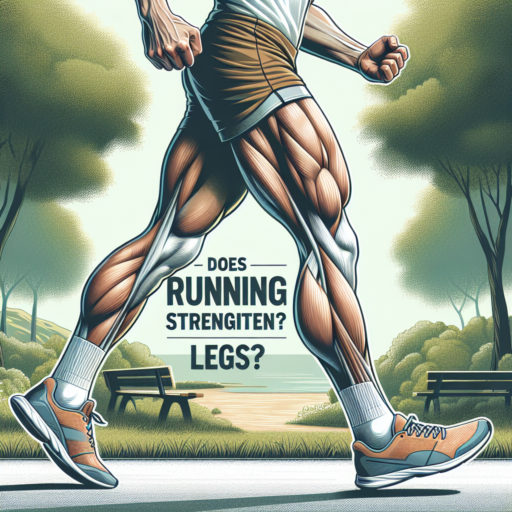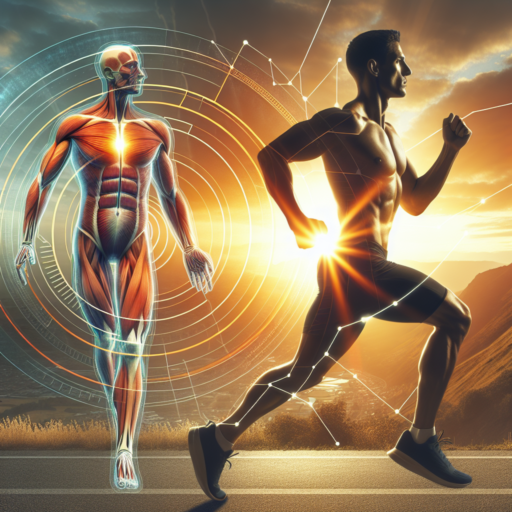Does running help your legs get stronger?
Undoubtedly, running is one of the most effective activities for boosting overall leg strength. It engages multiple muscle groups in your legs, including your quadriceps, hamstrings, glutes, and calves. Regular running sessions contribute to an increase in muscle endurance and strength, catering not only to muscle tone but also to the functionality and endurance of the leg muscles.
However, it’s crucial to understand that the impact of running on leg strength can vary depending on several factors such as intensity, frequency, and duration of the activity. Engaging in sprinting or uphill runs, for example, can exert more force on your leg muscles, leading to significant strength gains compared to leisurely jogs. Incorporating interval training or speed work into your running routine can also amplify the strength-building effects.
To maximize the benefits of running for leg strength, incorporating a variety of running styles and terrains into your workout regimen is advisable. This not only prevents the monotony of a single type of running but also challenges different muscle groups in your legs. Additionally, ensuring proper rest and recovery periods is essential in allowing your muscles to repair and grow stronger.
No se han encontrado productos.
Can I build leg muscle by running?
Running is a popular form of exercise that is celebrated for its numerous health benefits, including cardiovascular fitness, weight loss, and stress reduction. However, when it comes to building muscle, specifically in the legs, there is some debate. Running primarily engages the lower body, employing muscles in the legs such as the quadriceps, hamstrings, calves, and glutes. These muscles work together to propel the body forward and absorb impact with each step, which can lead to increased muscle tone and endurance.
One of the key factors in muscle building is resistance. Unlike weight lifting, which uses external weights to create resistance, running uses body weight. This means that while running can help in toning and strengthening leg muscles, it might not increase muscle size to the same extent as resistance training. However, the type of running plays a significant role. For instance, sprinting or hill running introduces higher intensity and resistance, which can be more effective in building leg muscle compared to long-distance running.
The duration and frequency of running sessions also influence muscle development. Consistent, short, high-intensity running sessions are more likely to contribute to muscle growth. On the other hand, long-distance running is often associated with muscle endurance rather than bulk. Incorporating intervals, such as sprints and uphill running, into regular running routines can challenge the leg muscles more vigorously, promoting strength and even muscle hypertrophy over time.
Do your legs get toned from running?
Many individuals embark on a running journey with multiple goals in mind, one of which often includes the quest for well-toned legs. Running, as a high-impact cardiovascular activity, inherently works multiple muscle groups in the legs, including the calves, quadriceps, hamstrings, and glutes. This comprehensive engagement of lower body muscles is what contributes to the toning and shaping of the legs.
The Role of Consistency in Toning
Consistency plays a pivotal role when it comes to seeing results from running. The regularity and intensity of your runs can directly impact how quickly you notice changes in muscle tone. It’s not just about the distance covered but also about incorporating a variety of running styles, such as sprints and long-distance jogs, to challenge the muscles differently and promote overall leg toning.
Complementing Running with Other Exercises
While running can significantly contribute to leg toning, incorporating other forms of exercise can enhance and accelerate results. Strength training exercises targeting the lower body, such as squats, lunges, and deadlifts, can further define muscle tone and improve running performance. Additionally, activities that focus on flexibility, such as yoga or Pilates, can support muscle recovery and ensure a balanced approach to toning.
Does running make you have nice legs?
Certainly, the question of whether running makes you have nice legs is one that garners considerable interest among fitness enthusiasts and those looking to improve their physical appearance. Running, as a high-impact cardiovascular exercise, not only enhances your overall health but also has specific benefits for leg toning and shaping.
Firstly, running consistently targets several key muscle groups in the legs, including the calves, quads, hamstrings, and glutes. This comprehensive engagement results in more defined muscles over time. However, the effect on your legs’ appearance can vary depending on factors such as your running pace, frequency, and the terrain on which you run. For instance, sprinting and uphill runs are particularly efficient at building leg muscle due to the increased resistance and intensity.
Additionally, running aids in fat loss, which is a critical component in sculpting the legs. By burning calories and reducing overall body fat, running can help uncover the muscles beneath, contributing to a toned and attractive leg appearance. Yet, it is essential to remember that diet and consistency in your running routine play pivotal roles in achieving the desired results.
Key Points for Toning Your Legs Through Running
- Mix up your running routine with sprints and uphill runs for muscle building.
- Consistency is crucial – regular runs are more effective in toning legs.
- A balanced diet aids in fat loss, enhancing muscle definition in your legs.
In summary, while running certainly can help in achieving nicer legs through muscle toning and fat loss, it should be complemented by a healthy diet and a well-rounded exercise regimen for the best outcomes. Remember, patience and persistence are key; the transformation of your legs will not happen overnight but with sustained effort, running can significantly contribute to their improved appearance.


